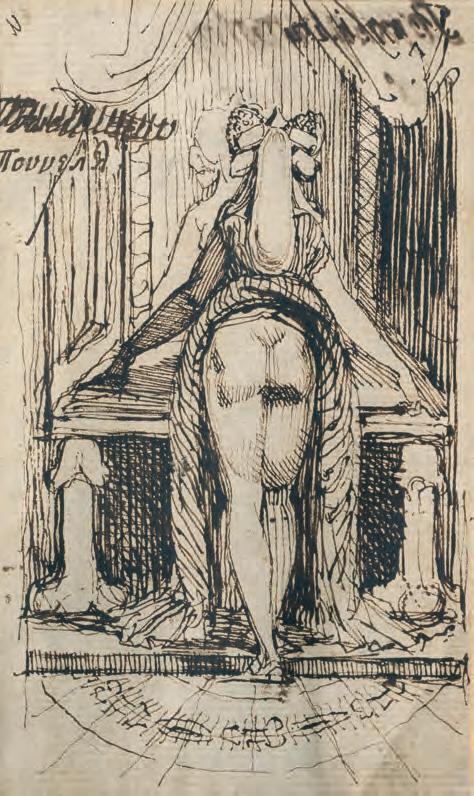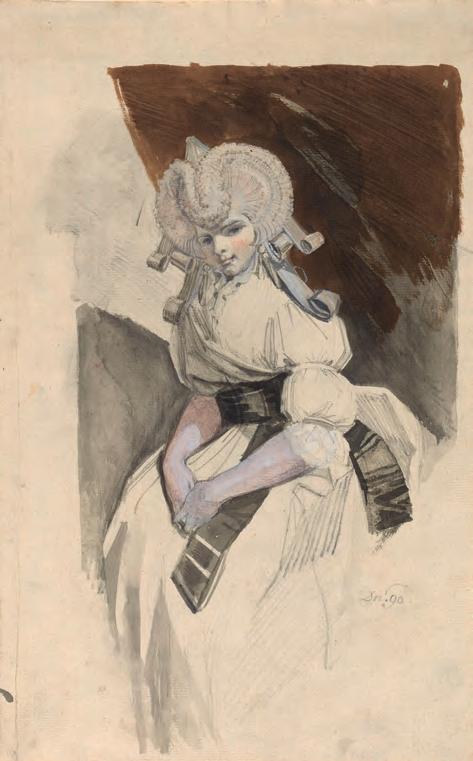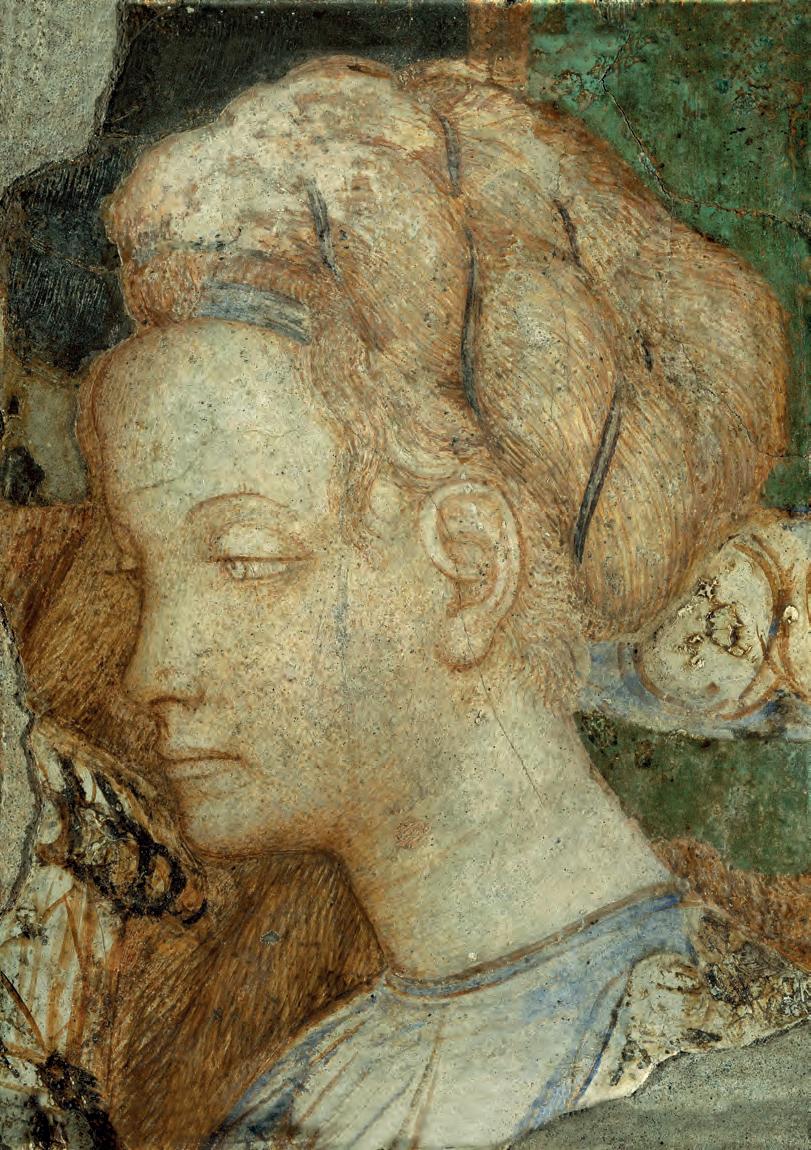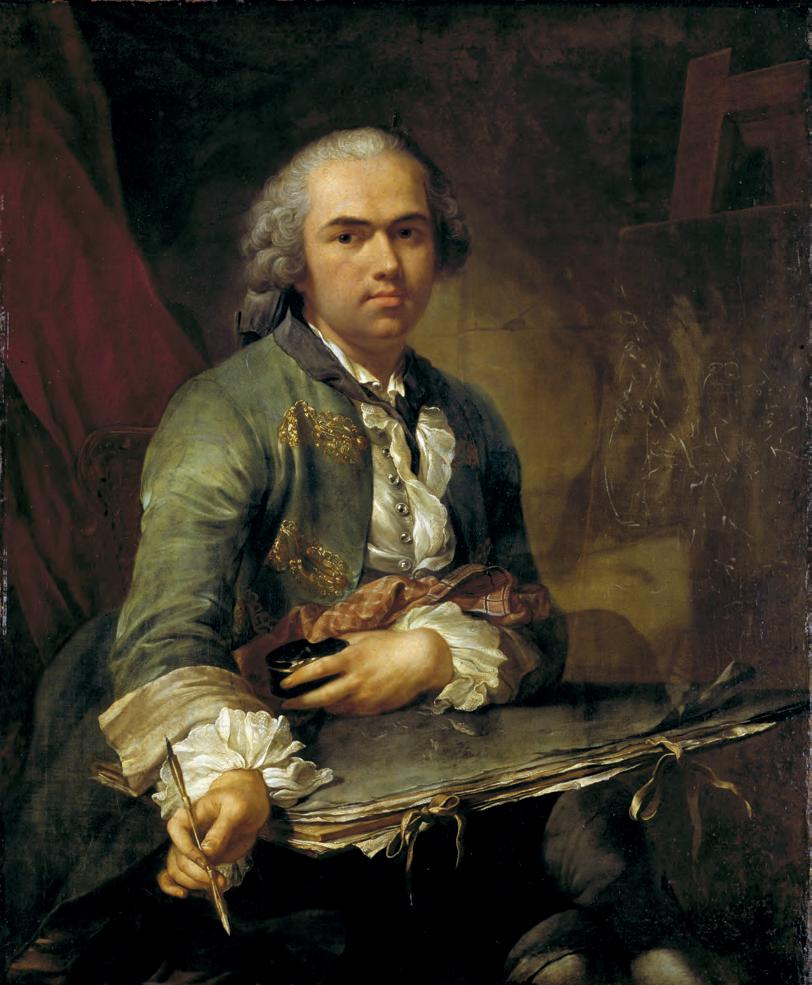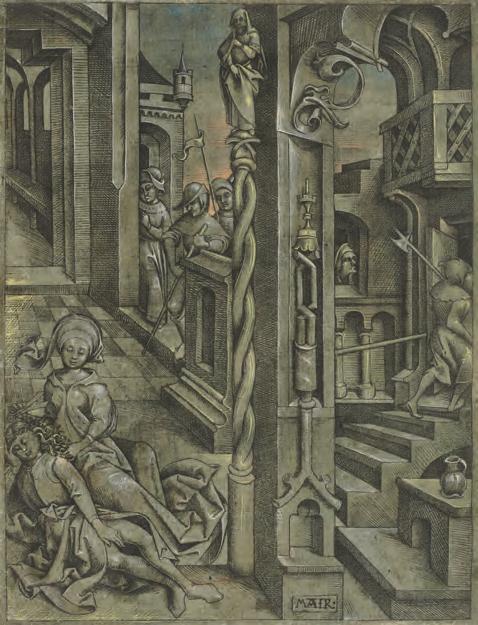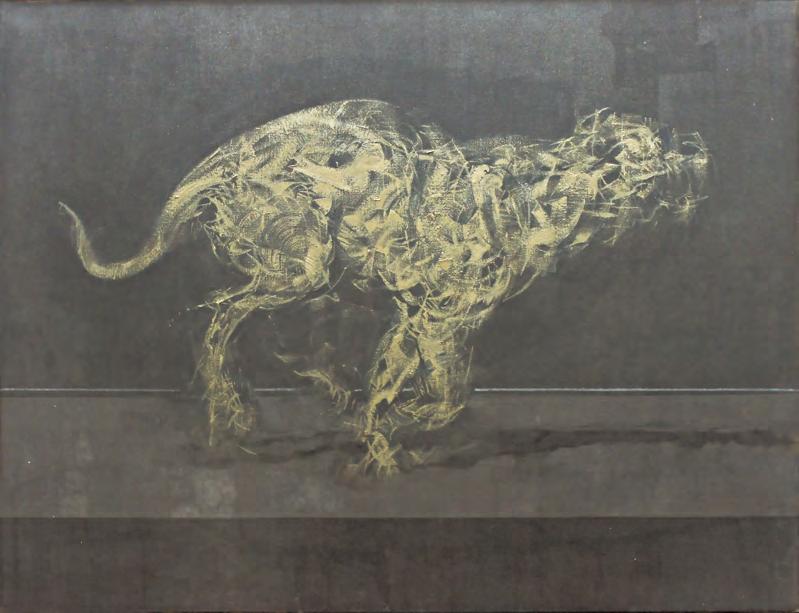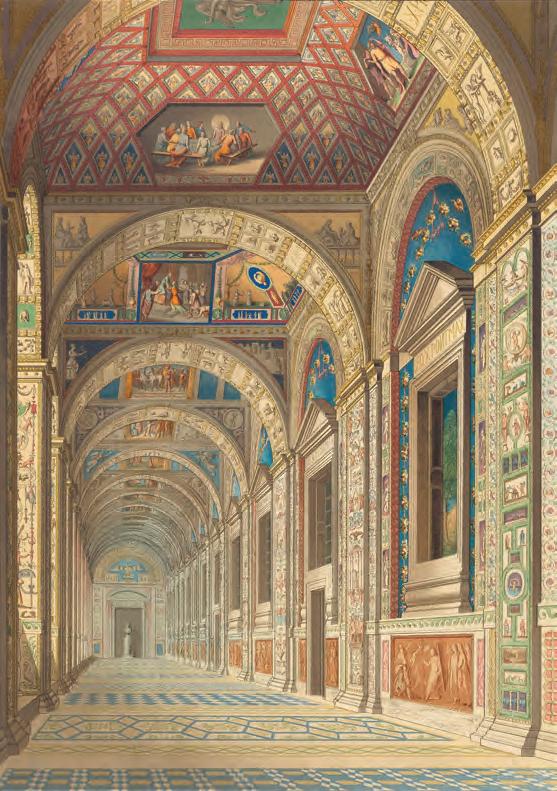
3 minute read
A Companion to Late Medieval and Early Modern Siena, S. Casciani and H.
which suggests that engraving must have already been an important if not the main element of his artistic practice. Among them are devotional prints, such as the three depicting the Engelweihe, the mystical consecration of the abbey church of Einsiedeln by Christ and the angels in 948 (the Städel owns one of them, the so-called Small Madonna of Einsiedeln from 1466; no.15). When, in 1466, Pope Paul II granted the Benedictine monastery a general indulgence, these engravings could be offered to pilgrims on their way to the Benedictine monastery on the occasion of the annual feast day of the event. Master ES also produced playing cards and prints illustrating motifs to be used in artists’ workshops. Heavy use of inherently fragile paper inevitably often led to the deterioration and discarding of such sheets. As a result, nearly half of this prolific master’s works survive in only one or two impressions, often by accident, in most cases by having been pasted into books.
Given the poor survival rates of early prints, the Städel’s holdings are surprisingly comprehensive. They provide a fairly representative overview of the history of early intaglio printmaking and boast many outstanding impressions and rarities. It was in large part thanks to Johann David Passavant (1787–1861), the curator of the Städel from 1840 until his death, that the collection was ‘systematically augmented according to the available means’2 during the nineteenth century. Coincidentally, the period of growth in this field came to an end at the time Lehrs published his catalogue of the Städel’s holdings in 1891. Sonnabend references merely four noteworthy acquisitions in the twentieth century, with the two most recent ones a gift from 2000, St Margaret by Master BR (no.71), known in only three impressions, and a purchase from 2008, a unique impression of St Catherine reading by Master WAH (no.64). A good example of the high quality of the collection is Mair von Landshut’s engraving Samson and Delilah (no.78; Fig.4), printed on a sheet of prepared, greenish-grey paper and carefully highlighted with pen and brush in white, yellow, orange and blue. Of the six surviving impressions of this print, five are embellished in a similar fashion, emulating drawings on coloured paper, which were much sought after by early collectors. None of the other impressions, however, shows the same delicacy in handling as the Städel’s sheet. Equally rare is the Judgment of Solomon by Master BM (no.59; Fig.6). Its size, 29.4 by 42.1 centimetres, is astonishingly large for the period, equalling Christ carrying the cross (no.25) by Schongauer, to whom it is also indebted stylistically. Schongauer’s print is remarkable for its compositional complexity, which is particularly evident in the way that the densely populated scene is embedded into a panoramic landscape. Master BM’s engraving, on the other hand, is characterised by a monumentality of the individual figures that is unrivalled among early northern European prints. A drawing of similar size in the Graphische Sammlungen der Klassik Stiftung Weimar shows the composition in reverse. Attributed to Schongauer in the nineteenth century, it is now considered to be a copy after a lost work by the master.
Advertisement
This relationship between drawing and print raises the more general question of how individual motifs were transmitted. In the carefully researched catalogue, which includes extensive, footnoted entries summarising the relevant scholarship for each print, Sonnabend discusses this and many other overlooked aspects.3 Whereas the exhibition presents a history of the medium in its first century, the catalogue complements this narrative with an account of the historiography. Sonnabend rightly challenges the paradigm of the artist as genius that underlies modern art history, including the study of early prints. In particular, he questions the traditional distinction between ‘masters’ and ‘monogrammists’; the former are credited with the ability to innovate whereas the latter are considered mere copiers. Thus, Master BM, who created the impressive Judgment of Solomon, was relegated to the rank of a ‘monogrammist’. Sonnabend

